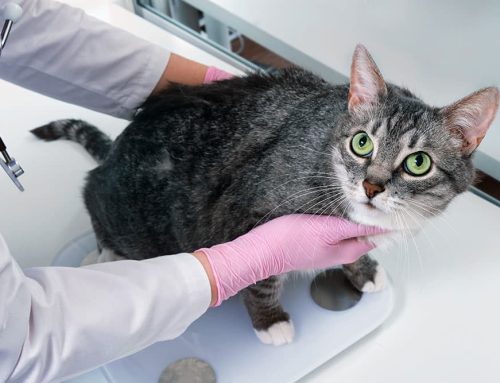Administering medications to pets can be challenging, especially given all the different medication types, such as pills, oral liquids, and topical ear and eye medications. However, with the right techniques and know-how, you can confidently medicate your furry friend without stress or struggle. Our Mobile Cat & Dog Vet team shares expert tips for administering various pet medication types, ensuring your pet’s health and well-being are in good hands.
How to administer pills to your pet
Administering tablets, capsules, or other pill types to pets can be tricky, especially if your pet is uncooperative. Here are some expert tips to make the process easier:
- Use pill pockets — Hide the pill inside a tasty treat, cheese ball, liverwurst, peanut butter, or a commercially available pill pocket to mask the medication’s taste and smell.
- Break the pill — To better hide the pill, break it into smaller pieces or crush it and mix it with a small amount of wet food. However, before you try this option, ask Dr. Libby if the medication can be broken or crushed, as that is not always an option.
- Use a pill popper — A pill popper is a handy tool that helps you safely place the pill at the back of your pet’s throat, so they can more easily swallow—and you don’t need to put your fingers inside their mouth.
- Create a competition — Appeal to your pet’s competitive side by giving all your pets treats at once. If your pets are adept at catching treats, incite safe rivalry by tossing a pill hidden inside a treat at the pet to be medicated. Quickly toss treats at all your pets, ensuring the correct pet receives the medication and no one else snatches up the hidden pill.
- Lay a treat trail — Place your pet’s pill inside a treat and lay out a line of “empty” treats with the pilled treat in the middle. As your pet gobbles up the line of treats, they won’t stop to assess the weird taste, texture, or smell of the treat with medication.
How to administer oral liquid to your pet
Administering liquid medications to pets requires patience and precision. Here are some tips to help:
- Use a syringe — Draw the prescribed amount of medication into a syringe that you gently insert in your pet’s mouth, aiming for the pouch between the cheek and gums to avoid choking and aspiration.
- Mix with food — Mix the liquid medication with a small amount of your pet’s favorite wet food or treat to make it more palatable.
- Ensure your pet is hungry — A hungry pet is much more likely to gulp down medicine-tainted food than one who has just eaten a full meal. Before feeding your pet, mix their medication with a small amount of food, which will help ensure they eat it all.
How to administer ear medications to your pet
Administering topical ear medications requires careful application to ensure effectiveness. Here’s how to do it like a pro:
- Clean the ear, if needed — If necessary, gently clean your pet’s ear with a veterinarian-approved ear cleaner to remove any dirt or debris. Not all ear medications are meant for clean ears, so first check the directions.
- Position your pet — Hold your pet still and gently lift their ear flap to expose the ear canal. You may need a towel, thick blanket, or a helper who doles out treats to keep your furry friend calm.
- Apply the medication — Carefully apply the prescribed amount of medication to the inside of your pet’s ear canal, massaging the base of the ear to help distribute the medication evenly.
How to administer eye medications to your pet

Administering topical eye medications requires a delicate touch, so you don’t make your pet uncomfortable. Follow these tips for successful administration:
- Restrain your pet — Gently restrain your pet to prevent them from moving. Use bribes, towels, and a helper, if needed.
- Hold the eye open — Gently hold your pet’s eyelid open with one hand and administer the medication with the other hand.
- Apply the medication — Roll out the lower eyelid and drip in the prescribed number of drops or apply a line of ointment into the pouch you have created. Avoid contact with the eye to prevent irritation.
Administering medications to pets may pose challenges, but with the right techniques and patience, you can ensure your pet receives the treatment they need. However, if your four-legged friend is particularly resistant, contact our Mobile Cat & Dog Vet team for additional tips and support.








Leave A Comment